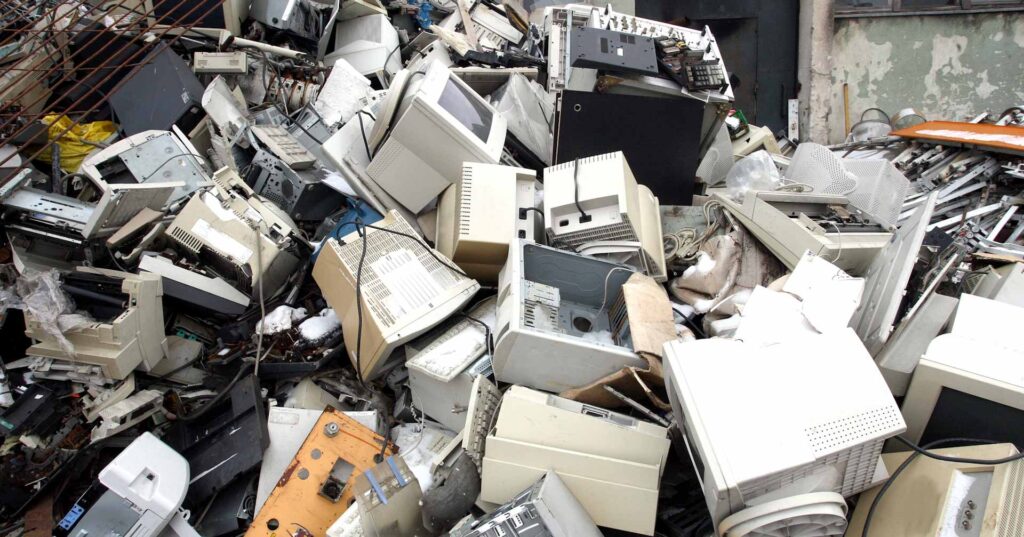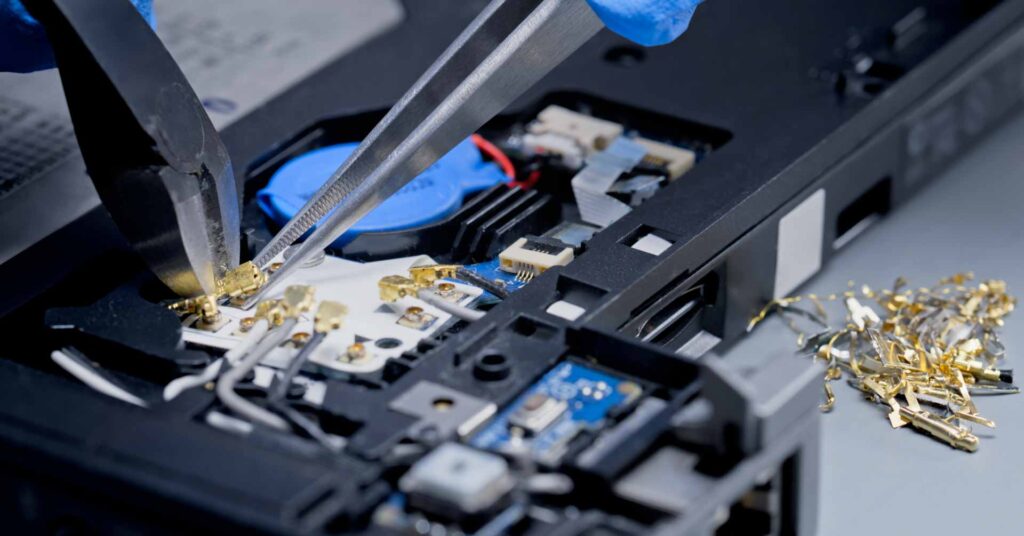How PIM helps electronics brands avoid the dangers of e-waste
February 21, 2024From environmental hazards to lost resources, the implications of e-waste are significant.
As the world transitions to a more sustainable circular economy, reducing waste is a key focus area across all industries and sectors. Reducing waste not only cuts the amount of discarded material ending up in landfills but also promotes the reuse and repurposing of finite resources that can be given a second lease of life in different products across multiple industries. However, cutting waste is often easier said than done.
While all industries face unique challenges regarding reducing waste, one industry seeing increasing concern is consumer electronics and appliances. Products such as laptops, washing machines, and smartphones typically end up in landfills, despite the vast amount of key, finite resources often included within these products. In fact, according to the United Nations, just 17.4% of electrical waste is recycled globally right now.
As electronics and appliance brands look to boost their own circular ambitions and reduce the amount of electronic waste (or e-waste) they produce, many are looking for new and innovative ways to revitalize the end-of-life processes for their products. Increasingly, this starts with their product data, with more brands and manufacturers turning to the robust data governance provided by Product Information Management (PIM) to help them tackle growing concerns around e-waste. Here’s how:
The problems with e-waste
There are several issues with the e-waste created by throwing out electrical goods, such as:
Failure to reuse resources
With ever-shortening product upgrade cycles, many products that end up in landfills are still usable. For example, even if a smartphone has a broken screen or burnt-out heating or cooling element, many of its components and materials could have years of use in another product. Even materials that are abundant and easy to replenish, such as the plastic, glass, or metal used within smartphones, can be conserved to save the energy, water, and chemicals needed to reproduce them.
Disposal of finite materials
Many electrical products use non-renewable materials, often in essential components such as motherboards. Copper, cobalt, and platinum are some of the most commonly used finite earth materials. All three can be recycled repeatedly without losing much performance capacity but are often lost to landfills, with cobalt being recycled just 68% of the time. If manufacturers aren’t reclaiming these critical materials, they’re wasting resources – in terms of both the finite materials and the effort required to source them.
Pollution of the environment
A more urgent reason why e-waste needs to be tackled is its impact on the environment. Many electrical products have harmful chemicals inside, which can leak out if the item is damaged in a landfill or burned. Toxic chemicals including lead, mercury, and arsenic pose a serious threat to the health of both local communities and the natural world if they aren’t properly disposed of. This is especially true if the e-waste is exported to less developed countries, exposing local populations to potentially hazardous toxins.

The changing face of product journeys
Historically, product journeys have been linear, with relatively simple supply chains and disposal protocols. However, products today are becoming increasingly complex and subject to more regulations, particularly around sustainability. Regulations such as the US’s Electronic Product Regulations and the EU’s Waste Electrical and Electronic Equipment (WEEE) are just two measures pushing for better product circularity and e-waste management.
Probably the most disruptive regulation is the European Union’s forthcoming Digital Product Passport (DPP) regulatory framework, which will be partially introduced by 2026. It’s a game-changing traceability measure, with every electrical product sold in the EU market requiring a digital twin that details data related to every step of the product’s life cycle, from material sourcing to reselling and recycling.
Many brands and manufacturers are already taking action to reduce how much e-waste goes to landfill. Schemes such as Dell’s Responsible Recovery and Recycling Services allow customers to return their items to Dell for recycling. Dell’s program is just one of a growing number of similar schemes aimed at cutting e-waste. However, whether a regulatory requirement or an internal program, the need for accurate and transparent product data to power these processes has never been stronger. That’s why a growing number of electronics and appliance brands are turning to PIM software to build the data-led foundation they need to reduce their e-waste.
How PIM can help reduce e-waste
There are many ways Product Information Management software can help brands and manufacturers cut their e-waste, including:
Cut costly product returns
Product returns can be a significant drain for brands and manufacturers, both in terms of associated costs and resources. However, returned items can often end up as waste due to damage sustained during the returns process, and for electrical goods this means e-waste. With PIM helping create accurate and complete product stories and delivering them to every touchpoint, brands can help customers avoid buying inappropriate products and thus avoid the financial and environmental costs associated with returns.
Extend the product lifetime with SKU-level traceability
When electrical goods are returned for repair or to be resold, companies need a centralized source of accurate product information truth to ensure they can replace or upgrade specific parts and attributes as required. With PIM providing upstream-downstream data transfer that connects repair operatives with SKU-level traceability over every attribute, part, and component, products can be effectively and efficiently repaired. This can extend the product lifetime significantly and ensure products avoid being disposed of for as long as possible.

Ensure responsible disposal
As not all electrical items can have their lifetime extended indefinitely, the disposal processes of these products are significant to those brands looking to avoid e-waste. PIM systems enable manufacturers and brands to provide the end consumer with transparent information on all attributes and components included within an electrical product. For example, a laptop has many different components that require different disposal methods. By providing visibility of all these components, end users (whether the consumer or, more likely, a recycling plant operative) can make more informed decisions on the means of disposal of each component. This can significantly reduce the e-waste associated with each product.
inriver: The PIM for greener decision-making for your products
Customers and regulators alike are putting pressure on electronics brands and manufacturers to be transparent about how they’re managing e-waste as part of wider product circularity and sustainability conversations. That’s why so many are turning to the power of Product Information Management in a bid to secure robust data governance that can help them reduce unnecessary and unwanted waste from their products.
Inriver’s multi-tenant PIM software offers the most comprehensive solution on the market for electronics and appliances. With elastic data modeling, AI-powered content creation, syndication, and digital shelf analytics all built into one complete solution, brands and manufacturers can be sure they can meet the growing demands placed on their products, from the factory floor to the digital shelf, to the recycling plant.
want to see the inriver PIM in action?
Schedule a personalized, guided demo with an inriver expert today to see how the inriver PIM can get more value from your product information.
you may also like…
Powering sustainability with PIM
As the world moves towards a more circular future, the need for brands, manufacturers, and retailers to embrace sustainability has never been clearer. PIM plays a pivotal role in this push for sustainability, elevating data transparency to meet demands from consumers, regulators, and stakeholders across the entire product journey.
Brooke Cunningham
Former Chief Marketing Officer
As the former Chief Marketing Officer, Brooke was responsible for inriver's end-to-end marketing strategy.
Read more